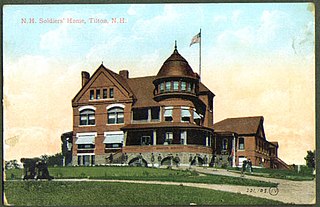
An old soldiers' home is a military veterans' retirement home, nursing home, or hospital, or sometimes an institution for the care of the widows and orphans of a nation's soldiers, sailors, and marines, etc.
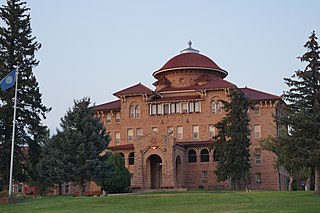
The National Asylum for Disabled Volunteer Soldiers was established on March 3, 1865, in the United States by Congress to provide care for volunteer soldiers who had been disabled through loss of limb, wounds, disease, or injury during service in the Union forces in the American Civil War. Initially, the Asylum, later called the Home, was planned to have three branches: in the Northeast, in the central area north of the Ohio River, and in what was then considered the Northwest, the present upper Midwest.
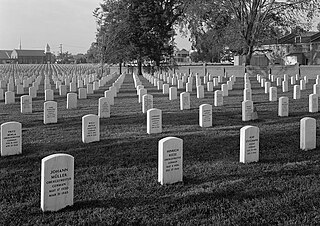
Hampton National Cemetery is a United States National Cemetery in the city of Hampton, Virginia. It encompasses 27.1 acres (11.0 ha), and as of 2014, had over 30,000 interments. There are two separate parts to this facility. The original cemetery is called the "Hampton Section" and is located on Cemetery Road in Hampton, VA. It is on the western side of I-64. The new section which is called the "Phoebus Addition" or the "Phoebus Section" West County Street in Hampton, VA east of I-64. It is less than a mile from the original cemetery. Both sections of the Hampton National Cemetery are closed to new interments.
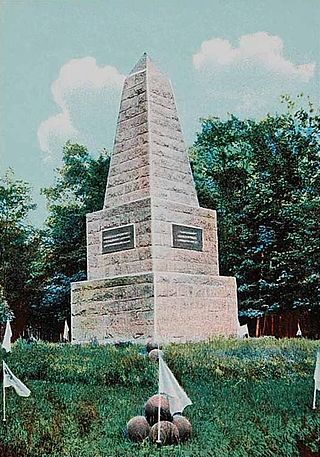
Togus National Cemetery is a United States National Cemetery located at Togus, Kennebec County, Maine. Administered by the United States Department of Veterans Affairs, it encompasses 31.2 acres (12.6 ha), and as of the end of 2020, had more than 5,300 interments. It is closed to new interments.

Richmond National Cemetery is a United States National Cemetery three miles (4.8 km) east of Richmond in Henrico County, Virginia. Administered by the United States Department of Veterans Affairs, it encompasses 9.7 acres (3.9 ha), and as of 2021 had more than 11,000 interments. It is closed to new interments. Richmond National Cemetery was listed on the National Register of Historic Places in 1995.

Fort Whipple is a former United States (U.S.) Army post that was temporarily established at Del Rio Springs, north of present day Chino Valley, Arizona, and later relocated to a permanent site near present day Prescott, Arizona.
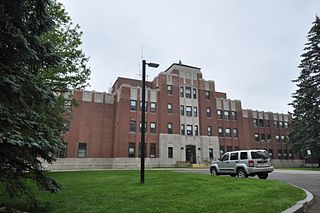
Togus, formally known as the Togus VA Medical Center, is a facility operated by the United States Department of Veterans Affairs in Chelsea, Maine. The facility was built as a resort hotel, and housed Union veterans of the American Civil War prior to being converted to a veterans hospital. It was the first veterans facility developed by the United States government.

Kennebec Arsenal is a historic arsenal on Arsenal Street in Augusta, Maine. Largely developed between 1828 and 1838 in part because of border disputes with neighboring New Brunswick, it was designated a National Historic Landmark District in 2000 as a good example of a nearly intact early 19th-century munitions storage facility. The arsenal property was garrisoned until 1901, after which it was turned over to the State of Maine as an expansion of the adjacent Maine State Hospital. The state for many years housed mental health patients there.

The National Home for Disabled Volunteer Soldiers, Marion Branch is a historic old soldiers' home located in Marion, Indiana. The hospital, along with Marion National Cemetery were listed on the National Register of Historic Places in 1999 as a national historic district.

The United States Custom House is a historic custom house at 312 Fore Street in downtown Portland, Maine. It was built from 1867–1872 to house offices of the United States Customs Service, and was listed on the National Register of Historic Places in 1973.
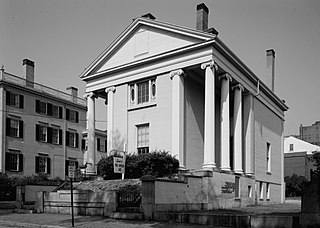
The Charles Q. Clapp House is a historic house at 97 Spring Street in central Portland, Maine. Built in 1832, it is one of Maine's important early examples of high style Greek Revival architecture. Probably designed by its first owner, Charles Q. Clapp, it served for much of the 20th century as the home of the Portland School of Fine and Applied Art, now the Maine College of Art. It is now owned by the adjacent Portland Museum of Art. It was listed on the National Register of Historic Places in 1972.

Harry S. Coombs (1878-1939) was an American architect practicing in Lewiston, Maine. He was the son of and successor to architect George M. Coombs.

Salem Veteran Affairs Medical Center (VAMC) is one of the largest VA hospitals located at 1970 Roanoke Blvd. Salem, Virginia 24153. Since 1934 VAMC in Salem has been improving the health of the men and women who have so proudly served the United States Navy, United States Army, United States Air Force, United States Coast Guard and United States Marines. Health care services have been provided to more than 112,500 veterans living in a 26-county area of southwestern Virginia. Salem VAMC provided community-based outpatient clinics. In addition to the main facility in Salem, there are affiliated services in three community-based outpatient clinics. These clinics are located in Danville, Virginia, Lynchburg, Virginia, Tazewell, Virginia, Wytheville, Virginia, and Staunton, Virginia.

The Northwestern Branch, National Home for Disabled Volunteer Soldiers Historic District is a veterans' hospital located in Milwaukee, Wisconsin, with roots going back to the Civil War. Contributing buildings in the district were constructed from 1867 to 1955, and the 90 acres (36 ha) historic district of the Milwaukee Soldiers Home campus lies within the 400 acres (160 ha) Clement J. Zablocki VA Medical Center grounds, just west of American Family Field.
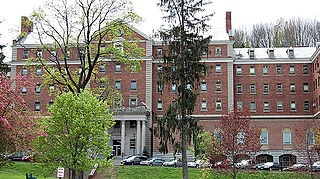
Bath VA Medical Center is a U.S. Veterans Administration hospital located in Bath, Steuben County, New York. Affiliated with the University of Rochester School of Medicine, it provides secondary care and operates clinics in Elmira and Wellsville, New York; and Coudersport and Wellsboro, Pennsylvania. It was added to the National Register of Historic Places in 2013, and designated a national historic district.
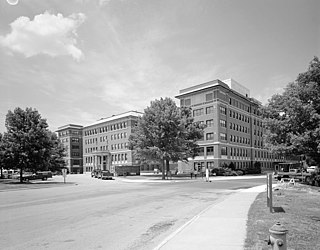
The Western Branch of the National Home for Disabled Soldiers was established in 1885 in Leavenworth, Kansas to house aging veterans of the American Civil War. The 214-acre (87 ha) campus is near Fort Leavenworth, and is directly adjacent to Leavenworth National Cemetery, south of Leavenworth town. The home features about 82 contributing building resources, constructed between the 1880s and the 1940s. It is now part of the Department of Veterans Affairs Eisenhower Medical Center.

The Dayton Veterans Affairs Medical Center is located at 4100 West 3rd Street in Dayton, Ohio. Founded in 1867, it is one of the three oldest facilities of what is now the United States Department of Veterans Affairs. When founded, it was known as the Central Branch of the National Home for Disabled Volunteer Soldiers, and it is under this name that a portion of its campus, along with the adjacent Dayton National Cemetery, was designated a National Historic Landmark District in 2012, for its role in the history and management of veterans affairs.

The Capitol Complex Historic District encompasses the principal historic elements of Maine's state administration complex at Capitol and State Streets in Augusta, Maine. Included in the district are the Maine State House, Capitol Park, The Blaine House, the Burton Cross Office Building, and a number of state-owned 19th century residences in the vicinity of the Blaine House. The district was listed on the National Register of Historic Places in 2001.

Knoxville Veterans Administration Hospital Historic District is a nationally recognized historic district located in Knoxville, Iowa, United States. It was listed on the National Register of Historic Places in 2012. The first part of the property that was developed is a cemetery, which is located in the middle of the former VA golf course. It contains 40 plots. The State Industrial Home for the Blind was opened on the site of what would become the Veterans Administration Hospital on January 1, 1892. It remained in operation until April 30, 1900, when the last patient moved out. Two years later the facility was transformed into the State Hospital for Inebriates, which was a place of detention and treatment for males addicted to morphine, cocaine and other narcotics. Local citizens protested, and it was closed a few years later.
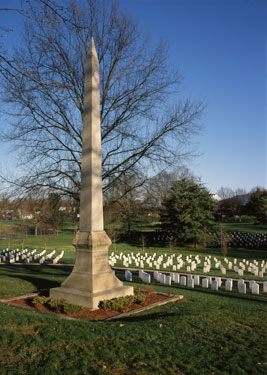
The Mountain Branch, National Home for Disabled Volunteer Soldiers was an old soldiers' home opened in 1904 in Mountain Home, Johnson City, Tennessee. Its site has since been taken over by the United States Department of Veterans Affairs, and is home to the Mountain Home National Cemetery and the James H. Quillen VA Center. Also known as the Mountain Home, its campus was designated a National Historic Landmark District in 2011, as a well-preserved example of an early 20th-century veterans care facility.























